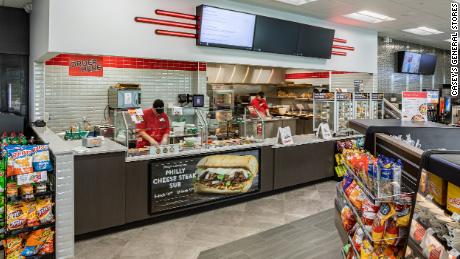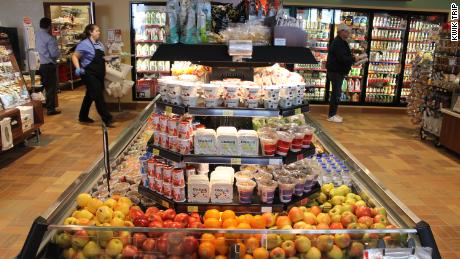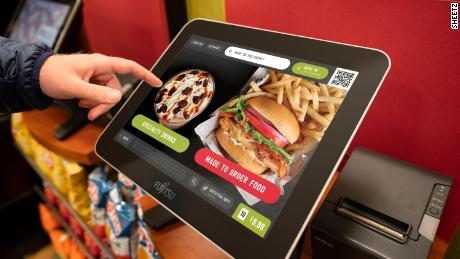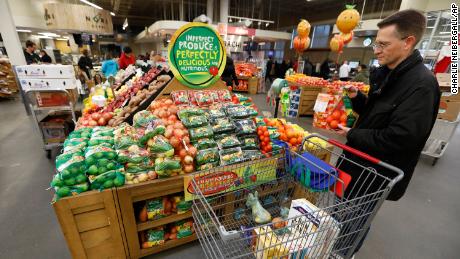But the convenience stores and gas stations that dot America’s retail landscape have worked to improve their dinners-to-go and coffee. Today, chains like Sheetz, Wawa and Kwik Trip offer meal kits, salads, keto snacks, Kombucha and espressos.
“It has absolutely been a hidden gem,” said Jeff Williams, senior vice president of retail services at Nielsen. “They are demanding that consumers view them as a destination for food.”
To keep up, chains are hiring executives from restaurants and expanding their snack choices and prepared food in kitchens on site.
Consumers, especially Millennials, are not always willing to go to a quick-service restaurant, a fast-food joint or walk around a 40,000-square-foot grocery store, analysts say. Instead, they’ll often head to a convenience store, where the average amount of time customers spend inside the store is less than four minutes.
“People simply don’t have the time to sit down a whole meal at night like they used to,” said Carl Rick, leadership development specialist at Kwik Trip, which is building around 40 stores a year and just opened its 700th. “The more places there are where people can duck in, be out in three minutes with milk, eggs, maybe a sandwich, something to drink—those places are doing very well.”
The growth of convenience
Quirky chains like Wawa and Sheetz in the northeast, Casey’s and Kwik Trip in the midwest,
Buc-ee’s from Texas, Maverik based in Utah and others are opening new stores and building devoted customer followings. (A couple recently
tied the knot at Wawa and one Sheetz superfan — Sheetz Freakz as they’re known — got a
tattoo of the company’s logo.)
Over the past decade, convenience chains have increased sales inside their stores by around 30%, according to the National Association of Convenience Stores, an industry advocacy group. Since 2000, the number of convenience stores in the United States has grown by 28%.
The
Southland Ice Company opened America’s first convenience store in 1927 in Dallas. The chain, which is now 7-Eleven, recognized an opportunity to sell these staples on Sundays and in the evenings when grocery stores were closed.
Convenience stores in the United States took off in the postwar period with the growth of car ownership, the creation of the interstate highway system and migration to the suburbs.
“These new vest-pocket supermarkets, most of them chain-operated, specialize in quick service, easy parking and long hours,” a New York Times reporter
wrote in 1966 about how convenience stores were starting to fill a roll “for the housewife.”
In 1965, there were 5,000 convenience stores in the United States. Today, there are upward of 153,000 of these mini-marts, more than all the grocery stores, drug stores and dollar stores in this country combined. 7-Eleven is the largest US convenience store chain with more than 9,000 outposts.
Around 93% of Americans live within 10 minutes of a convenience store, a highly-fragmented sector where regional chains and mom-and-pops dominate. Close to 80% of convenience stores have a gas station attached.
For years, convenience chains relied on tobacco, soft drinks and fuel to draw in customers, a business model often known as “Cokes, smokes and gas.” But Americans today are smoking less and steadily cutting out soda.
And increased regulations on tobacco and the decline of sugary drinks will continue to chip away at the areas convenience stores have long relied on to grow. This has forced convenience stores to adapt.
“When we look at what’s going to make us competitive in the future, it’s what’s going on inside the store,” said Rick from Kwik Trip.
Sheetz subs and Casey’s pizza
Top chains see an opening to cater to customers hunting for breakfast, a quick snack or a prepared meal for dinner. From 2009 to 2018, food service sales in convenience stores grew at a higher rate than any other area in the store, according to the industry trade group.
Spending on food away from home surpassed spending on food at Americans’ home for the first time in 2010, according to the Department of Agriculture.
“Fewer people are making those big grocery trips and more and more people are buying individual meals,” said Rick. “We’re looking to capitalize on that.” Kwik Trip sells eggs, milk, burgers and produce and has been expanding its selection of take-home dinners and fried chicken, which it preps at kitchens in Wisconsin.
These food trends are pronounced among Millennials, who eat out more often and visit the grocery stores less frequently than their parents, according to the agency.
“Millennials exhibit a higher preference for convenience” when it comes to buying food, a 2017 USDA study found.
“Our bullseye is kind of that younger age group — the late teens to the early thirties for food and beverage,” said Travis Sheetz, chief operating officer at Sheetz, a family-owned chain that has more than 600 stores on the East Coast and topped $7 billion in sales last year. “They tend to be much more accepting of eating at a gas station.”
Sheetz offers made-to-order sandwiches and salads and has espresso bars. Everything is done on touch screens, which it introduced in the 1990s.
The chain tries to separate its offering from McDonald’s, which it calls its biggest competitor, by offering more customizable sandwiches and a wider variety of choices.
“We’ve always had breakfast at night,” he said. “McDonald’s did that recently.”
Wawa, which has more than 800 convenience stores along the East Coast and is known for its hoagies, has added custom salads, artisan sandwiches and organic coffee in recent years. Casey, based in Iowa, has grown to become the country’s fifth biggest pizza chain. Its website looks more like
Domino’s (DPZ) than a gas station.
“This isn’t what a lot of people would characterize as gas station food,” said Darren Rebelez, chief executive officer at Casey’s General Stores, which has grown to become the country’s fifth biggest pizza chain.
7-Eleven is attempting to
transform its food and drinks, too. It has launched private-label meal kits and tested keto and paleo snacks at 125 Los Angeles stores. At a 7-Eleven lab store in Dallas, it has a growler bar stocked with local craft beers and a bar with frozen yogurt and ice cream. There is also a patio and inside dining areas.
The chain recently debuted Voyager Point, its own line of wine priced under $12.
Competition bearing down
But convenience stores are not the only areas of retail that recognize shifting consumer habits and demand for small-size stores.
Retailers and grocery stores have introduced copycat convenience-type models with food, and restaurants have sharpened their focus on breakfast and snacks. These strategies by competitors threaten to lure customers away from convenience stores.
A better cup at coffee at McDonald’s, for example, could take away trips to convenience stores during the morning, which these companies depend on.
“Other retail channels also are trying to steal our thunder,” said Steve Holtz, who covers the convenience store industry for CSP Magazine.
Dollar General (DG) is building smaller versions of its stores, called DGX, while
Kroger (KR) has
partnered with Walgreens to test “Kroger Express” mini-sections inside some
Walgreens (WBA) locations.
“This ability to get in and out really quickly is certainly something that is resonating,” Kroger CFO Gary Millerchip told analysts last year.
Other grocers such as Hy-Vee, Giant and Whole Foods are testing out new convenience-style formats, as well as
adding food halls and prepared meals to stores for customers to grab on the go.
In the future, “major grocery players will employ more small-format, convenience-oriented concepts,” real estate firm CBRE said in a
research report.
In addition, fast-food and quick-service chains like McDonald’s and
Dunkin’ (DNKN) have been focused on improving their
breakfast offerings and coffee. Customer visits for breakfast, coffee and snacks are parts of the day “that we didn’t have our fair share”
McDonald’s (MCD) CFO Kevin Ozan said on a call with analysts last year. These areas are “further growth opportunities” for McDonald’s.
Meanwhile, online competitors threaten to disrupt traditional convenience stores.
Amazon
reportedly has its eye on opening up to 3,000 small, cashier-less Go stores by 2021. And startups such as GoPuff and Cargo are taking advantage of the gig economy by offering snacks in ride-sharing apps like Uber. GoPuff, a “convenience store delivery app” that has expanded rapidly in dozens of cities, offers $1.95 delivery on more than 2,000 items from its own fulfillment centers.
But some convenience store executives say they are unfazed by Amazon and online entrants.
More than half of Casey’s stores are in towns with fewer than 5,000 people. And CEO Darren Rebelez believes Amazon will have a difficult time reaching those rural customers.
“I don’t think that [Amazon Go] is something that’s likely to show up in our footprint anytime soon,” he said. “It’s tough to really disrupt this industry in a meaningful way.”































